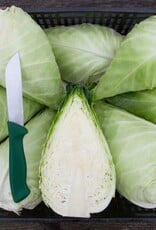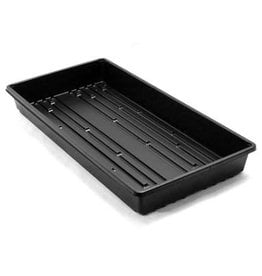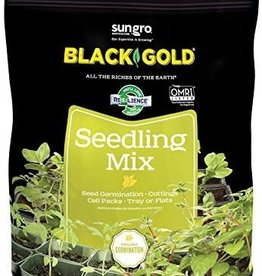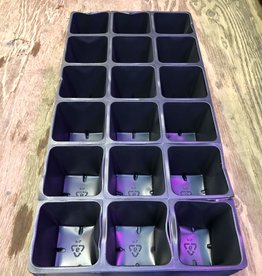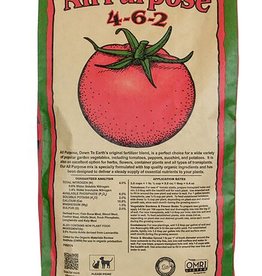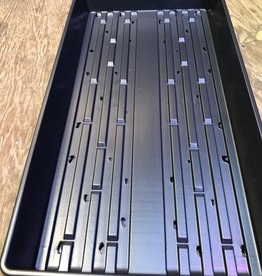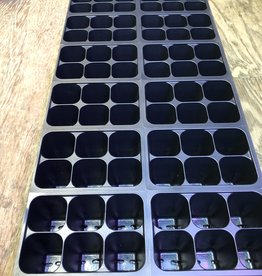HM Caraflex F1 Cabbage 10 SEEDS
| Availability: | In stock (8) |
Photo and Description Credit - High Mowing Seeds
Green sweetheart for fresh and gourmet markets.
Prized for its unusual cone-shaped heads and thin, sweet leaves that are delicious eaten raw or in stir-fries, slaws or egg rolls. Extremely uniform with good wrapper leaves for insect and sun protection. Sara Schlosser of Sandiwood Farm loves how perfectly Caraflex packs a box!
- Fresh market
- Stores 10 weeks
- 1.5-2 lb heads
- Hybrid
4.8-9.5M (7.3M avg) seeds/oz, 78-156M (117M avg) seeds/lb. M=1,000. 1/32 oz approx. 225 seeds.
Seeding Rate
2 seeds every 12", thin to 1 plant in rows 18-30" apart. Transplants: 12-18" apart in rows 18-30" apart.
Cultural Info
Cabbage is a hardy biennial in the Brassicaceae family, sharing species name Brassica oleracea with cauliflower, broccoli, collards, kale, brussels sprouts, and kohlrabi. Cabbage varieties encompass many shapes, colors and textures.
Brassica oleracea
- Ball head – the most common spherical shape includes varieties that are bred for early maturity (Primax), sauerkraut (Kaitlin), and winter storage, (Impala). Ball head cabbages can be red or green.
- Arrowhead- these lovely cone shaped cabbages are often on the small side and best for fresh market.
- Savoyed - the savoy type has deeply veined, curly leaves that make for a very attractive head which has great cold tolerance.
Brassica rapa var. Pekinensis
- Napa – also known as Chinese cabbage, this type has a similar shape to romaine lettuce. It has broad white midribs and pale green tender savoyed leaves.
Soil Nutrients and Requirements
Cabbages prefer well drained fertile soil that is within the range of 6.0-7.5 pH. A general guideline is 2-3 lbs of 8-16-16 fertilizer over 100 sq ft of garden area two weeks before planting. If boron is not present in your soils, consider adding 1 Tbs per 100 sq ft. Best quality arises from loose well drained fertile soils.
Seeding Depth
1/2"
Plant Spacing
for fresh market 10-18”; for storage and processing 18-24”
Row Spacing
for fresh market 12-18", for storage and processing 18-34”
When to Sow
Direct sow when daytime soil temps warm to 75°F. Start seeds indoors or in cold frames 4-6 weeks before planting date. Optimal soil temperature for germination is 75°F but seeds will germinate in soils as cool as 50°F. Early varieties can be transplanted after danger of hard frost has passed. Mid-late season storage or processing types can be transplanted in June-early July for fall harvest. Napa cabbages are best direct seeded or transplanted in mid-May for July harvest.
Harvest
Cabbage is mature when the tight outer leaf of the head begins to fold back on itself. Cut heads flat on underside.
Storage
Cabbage is best stored at 32°F, with high humidity and good air circulation. Green, actively growing, disease-free heads keep best.
Pest Info
- Cabbage looper, imported cabbage worm, and diamondback moth are of the Lepidoptera order and can thus be controlled by Bacillus thuringiensis (such as Dipel DF) and/or spinosad (such as Entrust™), preferentially in rotation with one another to prevent selection of resistant individuals (check with your certifier before applying).
- Protect plants from flea beetles by using floating row covers in the early season.
- Root maggots can be controlled by applying beneficial nematodes.
Disease Info
- Black rot (Xanthomonas campestris pv. campestris) first appears as V-shaped, yellow lesions at leaf margin. Infected plants should be pulled up immediately, and plantings should never be worked during wet conditions.
- Fusarium yellows, caused by the bacteria Fusarium oxysporum f. sp. conglutinan, manifests as yellowing of the lower leaves 2-4 weeks after transplanting. Yellowing moves to upper leaves and ultimately causes wilt.
- Fungal diseases can be prevented by spraying with copper hydroxide (such as Champion WP™and/or oxidate (such as Storox™), but are best prevented by production practices that build soil and promote vigorous plant growth.
- Clubroot is a soil borne disease which stunts the roots of the plants so that they are not able to develop normally. Rotate crops and add lime to raise soil pH to 7.2..


